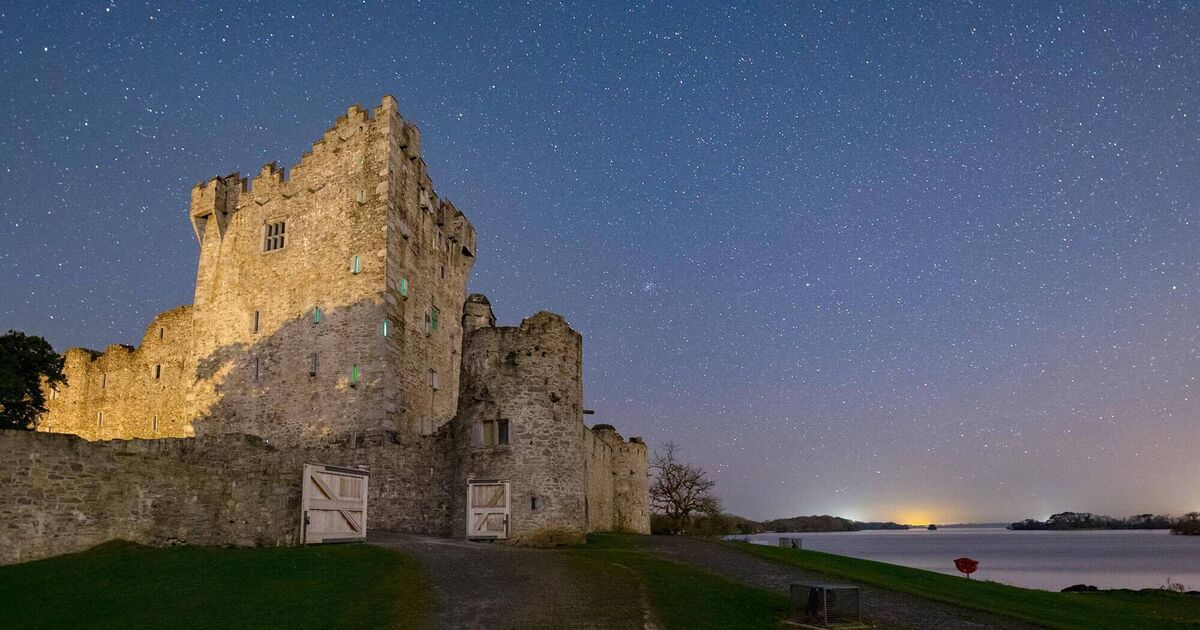[ad_1]
It’s not surprising that Ireland’s wild landscapes are beloved by outdoor enthusiasts the world over. Postcards of the emerald isle are adorned with rugged coastlines, lush green fields, and magnificent mountains. An escape to these landscapes is good for the soul – a chance to leave behind the straight lines, concrete, and uniformity of urban life, and to reconnect with the land that provides us with a home.
Finding that sense of place can be an especially moving experience. That feeling is something the night sky can offer on a cosmic scale – but only if you can see it. Sadly, many of us have never experienced a true night sky because of a very modern affliction – light pollution.
Light pollution occurs when excessive artificial light disrupts a natural environment. Artificial lights are of course a necessity of modern life, but all too frequently we use them more than we need to. On a day-to-day basis this problem can manifest as lights disrupting your ability to sleep, or bright streetlights actually impeding your night vision, but for stargazers light pollution means skyglow.
Skyglow drastically reduces the number of stars we can see by effectively ‘washing out’ the dimmest stars in the sky. This is particularly problematic in urban and suburban environments, but the effects of skyglow are so profound, even those of us living well beyond the boundaries of urban areas can experience their deleterious effects.

Thankfully, the news is not all bad. There are still refugia where you can escape the overbearing effects of artificial light: beautiful, untouched landscapes where the night sky reveals its timeless beauty and we can even see the delicate, smoky, stream of stars that comprises our home galaxy – the Milky Way.
The news gets even better — the darkest of Irish skies are regarded as some of the best in the world. Kerry International Dark Sky Reserve and Mayo Dark Sky Park are both considered gold tier by Dark Sky International. And recently OM Dark Sky Park in Northern Ireland became the island’s newest internationally recognised dark sky place.
Georgia MacMillan of Dark Sky Ireland says Ireland is the perfect place for outdoor enthusiasts to start engaging with stargazing “I feel very lucky that I get to pair my love of hiking in beautiful landscapes with some of the most pristine dark skies in the world. It’s no secret that places like Killarney and Mayo are incredible by day, but by night they take on a whole other kind of magic.”

Prepare for a visit to a Dark Sky Place as you would for any hike, but with a few extra considerations. First and foremost is safety. Consider the unique challenges posed by a night hike and plan ahead.
: Bring a torch and batteries to ensure you can safely get to your intended destination. Using a torch will affect your night vision, so once you’ve reached your destination, turn it off and allow your eyes 20 minutes to fully adjust. Alternatively, you can purchase specialist torches that use only red light to guide your path without significantly impacting your night vision. Looking at your phone will impact your night vision too so keep it in your pocket unless it’s an emergency! Don’t forget to bring reflective clothing to ensure you can be seen safely.
: As with any hike, you want someone with you who can call for help if needed. It’s also very rewarding to share a stargazing experience with other people so plan ahead and call a friend.
: Stick to marked paths and take your time. It’s harder to navigate at night, so make your intended route a realistic one. Remote areas often have poor phone reception, so consider this before relying on an online map. That said, ensure your phone is charged, travel with a partner, and tell someone at home where you are planning on going. Scout your location by day so you can be more confident of your surroundings when you visit at night.
: Try to find a location where your view of the horizon is not obscured. An open field, or a coastal view are both great candidates. Avoid locations overlooking towns, cities, or other sources of artificial light. Finally, if you can’t find an area with panoramic views, prioritise a southern view. This gives you the best chance of taking in the planets and the Milky Way.
A truly dark night sky can be overwhelming the first time you see it. There are so many stars it can be difficult to find a frame of reference such as a familiar constellation. My recommendation on your first visit is to just take it all in. Try to appreciate the scale of what you are seeing, and the truly humbling fact that some of those stars no longer exist — they are just so far away the last of their light has yet to reach us.
If you do want to look for a particular target, I recommend the Milky Way. While it isn’t the best time of the year to see it, you should be able to see a ‘smoky’ trail of stars starting at the southwest horizon and moving almost directly overhead from 8.30pm throughout Space Week (October 4-10) Space Week is an ideal time to start exploring Ireland’s wonderful dark sky heritage.
- To learn more, and to find Dark Sky events near you, visit spaceweek.ie.
- Space Week is when students, families, community groups and members of the public will come together with the space community, professional astrophysicists, the broader educational community, artists, hobby astronomers and space scientists to use the powers of creativity, critical thinking, science, technology, engineering and maths to focus on the wonders and realities of the Universe around us.
- Rob O’Sullivan is a science communicator and outreach coordinator at MTU’s Blackrock Castle Observatory in Cork.
[ad_2]



